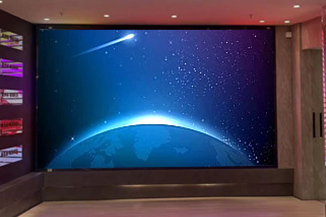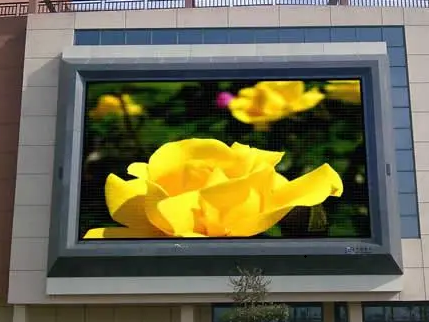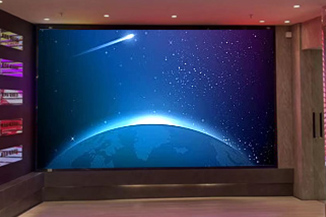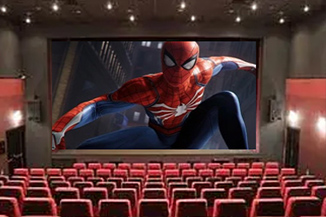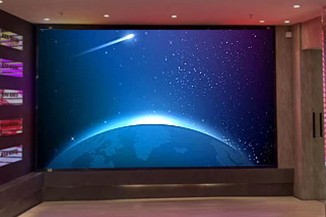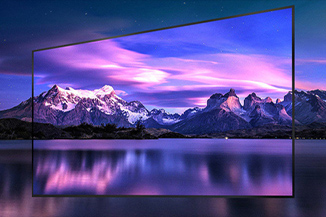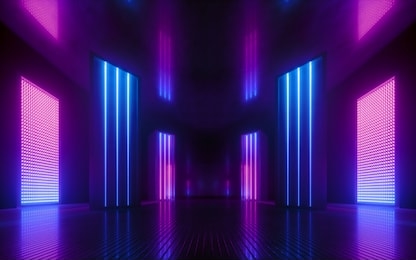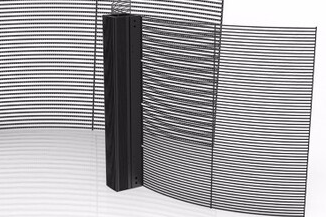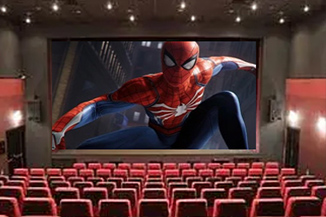Publisher: Supplier of LED Display Time: 2022-12-13 10:31 Views: 1387
Faced with the dazzling array of full-color displays produced by many LED display manufacturers on the market, many customers are hesitant about how to choose the most cost-effective product. Today, the editor from Liancheng will take everyone to analyze and discuss how to identify the advantages and disadvantages of full-color LED displays.
1. Brightness and viewing angle
The brightness of the indoor full-color LED screen must be above 800cd/m2, and the brightness of the outdoor full-color LED screen must be above 1500cd/m2 to ensure the normal operation of the display screen, otherwise the displayed image cannot be seen clearly because the brightness is too low. The brightness is mainly determined by the quality of the LED tube core. The size of the viewing angle directly determines the audience of the display screen, so the bigger the better. The size of the viewing angle is mainly determined by the packaging method of the die.
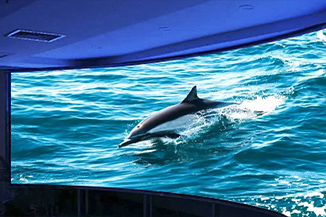
2. Flatness
The surface flatness of the LED display should be within ±1mm to ensure that the displayed image is not distorted, and local protrusions or recesses will cause dead angles in the viewing angle of the display. The quality of flatness is mainly determined by the production process.
3. Color reduction
The color reproduction refers to the color restoration of the display screen, that is, the color displayed on the display screen must be highly consistent with the color of the playback source, so as to ensure the realism of the image.
4. White balance effect
The white balance effect is one of the most important indicators of the display. In terms of color science, when the ratio of the three primary colors of red, green and blue is 1:4.6:0.16, pure white will be displayed. If there is a slight deviation in the actual ratio, there will be a deviation in white balance. Generally, it is necessary to pay attention to whether the white is blue or yellowish. green phenomenon. The quality of the white balance is mainly determined by the control system of the display screen, and the die also affects the reproduction of the color.
5. With or without color blocks
Color block refers to the obvious color difference between adjacent modules. The color transition is based on the module. The color block phenomenon is mainly caused by poor control system, low gray level and low scanning frequency.
6. Whether there are mosaics and dead spots
Mosaic refers to the small squares that are always bright or dark on the display screen, which is the phenomenon of module necrosis. The main reason is that the quality of the connectors used in the display screen is not good enough. The dead point refers to a single point that is always bright or normally black on the LED display. The number of dead points is mainly determined by the quality of the die.
7. Wire identification
High-quality wires have passed UL certification. These full-color LED display manufacturers indicate that they are unreliable, so the most direct way is to peel off the outer skin and count the number of cores inside! Use 15, 17, 19 cores or even 20, 30 The multi-core cable module should not be worse than the 14 and 11-core modules, and vice versa.
8. Lamp bead temperature
After lighting for a period of time, touch the LED lamp beads with your hands. If the temperature is high or even hot, it must not be as stable as the temperature is low.
9. Solder joint quality
If the solder joints are full, it proves that the welding process is good, and if the brightness is high, it proves that the solder is used well; if it is serious, it is a virtual solder joint, which is prone to poor contact and troublesome follow-up maintenance.
10. Full-color LED display light sticking method
At present, there are two production methods for full-color LED displays, one is positive light emission, and the other is side light emission. Although side-emitting has a relatively high transmittance, the lamp bead packaging technology needs to be tested by the market, and the lamp bead that is emitting light is the lamp bead of the traditional LED display. After market inspection, the quality is very stable.
11. PCB board thickness
If the PCB board that is emitting light is relatively thick, it will affect the transmittance of the full-color LED display.
The above is how to identify the advantages and disadvantages of full-color LED displays compiled by Liancheng Xiaobian. I hope it will be helpful to everyone. At the same time, you are welcome to correct or add. Lianchengfa (LCF) is a national-level specialized small giant enterprise, a LED display application and solution provider integrating "hardware + software + content + interaction". The main business covers four major sections: "Smart City", "Cultural Tourism Commercial Performance", "Commercial Display Engineering", and "Content Technology". It has the world's leading automated production equipment, modern post-doctoral research laboratories and comprehensive sales and services. team. Friends who want to buy LED displays can also contact us Lianchengfa led display manufacturer, a big country brand, trustworthy!
